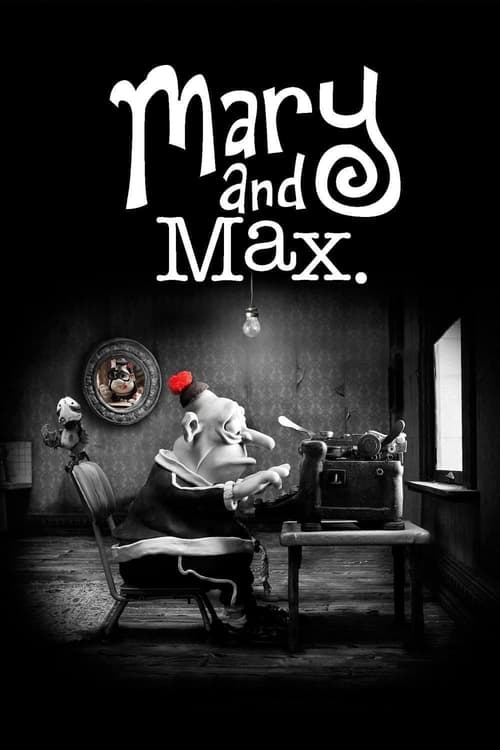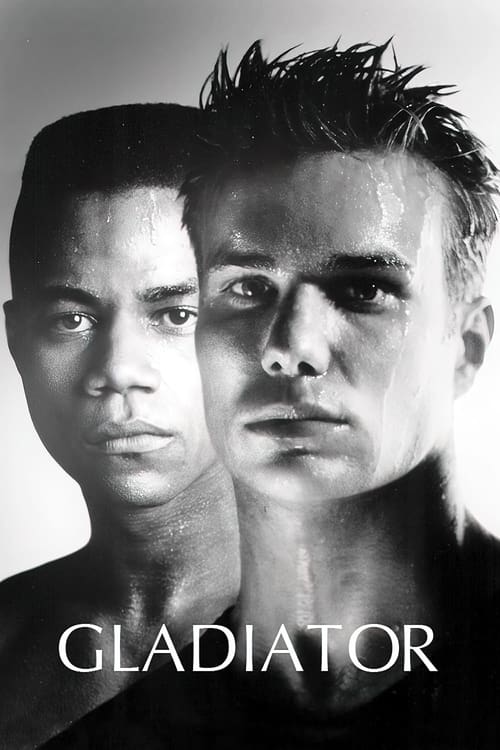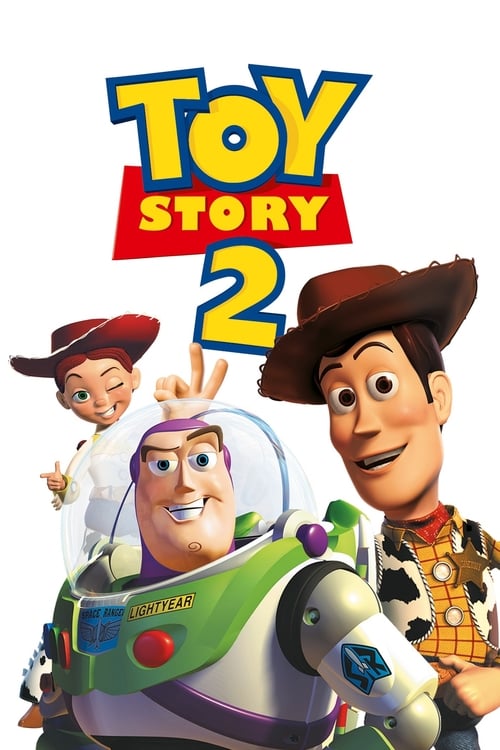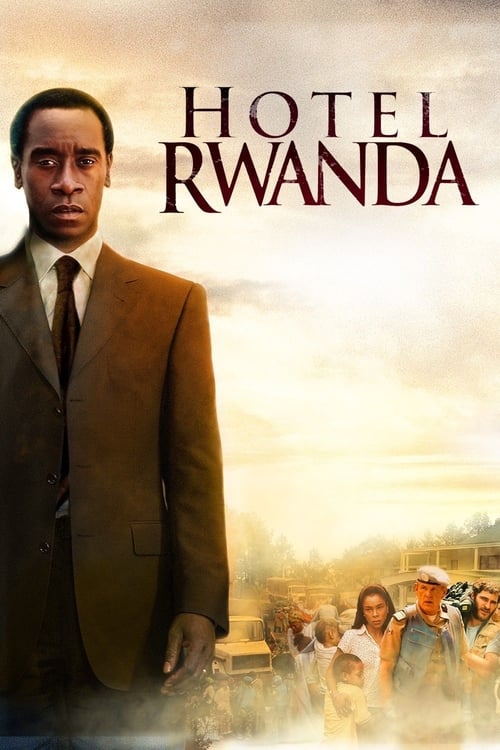
Mary and Max
A tale of friendship between two unlikely pen pals: Mary, a lonely, eight-year-old girl living in the suburbs of Melbourne, and Max, a forty-four-year old, severely obese man living in New York.
Dialogues from Movie Mary and Max
Quotes from Movie Mary and Max
Sound Tracks from Mary and Max by Carter Burwell
Proud
Proud by Björk, Featured in a key emotional moment
One More Hour
One More Hour by The Breeders, Used during a pivotal scene in the film
Download App
Memorable Scenes from Movie Mary and Max
The First Letter
Mary, a lonely young girl from Australia, decides to reach out to Max, a middle-aged man with Asperger's living in New York, after picking his name from a phone book. The significance of this initial letter sets the tone for their unique friendship. As Mary writes about her life, we see her imagination come alive with the animation aesthetic. The moment Max receives the letter acts as a pivotal peak, where both characters are introduced to a life-changing connection. The aftermath of their exchange leads to an enduring pen-pal relationship that greatly impacts both their lives, highlighting themes of loneliness and companionship. Viewers feel a mix of curiosity and warmth here, eager to see where this correspondence will lead.
Context: The story begins by introducing Mary and her struggles in a harsh environment, setting the stage for her search for connection.
Mary's Childhood
Mary recalls her difficult childhood and her strained relationship with her mother, who is emotionally abusive. The visuals contrast her vibrant inner thoughts with the grayness of her reality. This stark difference deepens the viewers' sympathy for Mary. The pivotal moment comes when she reveals in a voiceover how this pain motivated her to reach out to Max. The aftermath highlights the significance of their correspondence, showing how Mary uses this friendship as an escape and a way to navigate her turbulent emotions. Viewers are likely to feel heartbroken for Mary, emphasizing the deep pain and desire for acceptance she experiences.
Context: This scene provides critical backstory on Mary's life, explaining her motivations for seeking connection with Max.
Max's Confession
In a pivotal letter, Max opens up about his struggles with depression and anxiety, revealing his feelings of alienation. The animation shifts to illustrate his dark thoughts and fears visually, making his isolation palpable to the audience. The narrative peak occurs when he admits that he has never had a true friend. This moment resonates deeply and amplifies the emotional stakes of their friendship. The aftermath impacts both characters, making Mary more aware of the challenges Max faces. Viewers may feel a visceral connection to Max's struggles, evoking empathy and sadness for his life. The raw honesty in this scene underscores the film's themes of mental health and friendship.
Context: This moment is crucial as it unveils Max's internal struggles, enabling viewers to understand the depth of his character.
The Comfort of Routine
Mary and Max develop their own correspondence routine, creating a comforting structure for both. This repeated action presents their growing bond and the weight of their daily lives. The pivotal moment arises during one of their exchanges when they share their favorite foods, symbolizing their attempt to find common ground. The warm and whimsical animation complements the comforting dialogue. The aftermath showcases how this routine becomes vital in both their lives, offering stability amidst chaos. Viewers are filled with warmth and hope as they see their friendship flourish despite the distance. This scene emphasizes the importance of regular connection and understanding.
Context: The buildup of their routine illustrates how small moments can lead to significant relationships, emphasizing the comfort it brings to both.
The Visit
Max finally invites Mary to visit him in New York after years of correspondence. The anticipation is palpable. The pivotal moment occurs when Mary arrives, and the realities of their lives clash—Mary's youthful optimism against Max's harsh reality. The visual contrast between the colorful New York street and Max's grim apartment highlights their differences. The aftermath reveals the difficulty of merging their two worlds; they realize that their letters built an idealized version of each other. Viewers might feel a mix of happiness and tension, questioning if their friendship can survive the reality. This scene emphasizes that idea that reality is often more complex than imagination allows.
Context: Mary’s visit marks a significant turning point in their relationship—showing both excitement and the risks involved in meeting someone from a distance.
A Misunderstanding
After their visit, a misunderstanding leads to a rift between Mary and Max. In a letter, Mary accidentally mentions a personal matter that Max interprets as rejection. The visuals darken to reflect Max's emotional turmoil. The pivotal moment occurs as he decides to cut off communication. This reveals the fragility of their connection, emphasizing how miscommunication can damage even the strongest bonds. The aftermath sees both characters reflecting on their loneliness. Viewers may experience anxiety as they witness their relationship unraveling. This scene poignantly captures the themes of misunderstanding and the importance of clear communication.
Context: This scene illustrates the impact of miscommunication, highlighting vulnerabilities in both characters and creating tension in their friendship.
Mary's Art
Mary discovers solace in her art during the time away from Max. Her creative process displays her emotions vividly, showing how she channels her struggles into beautiful pieces. The pivotal moment occurs when she creates a piece symbolizing her friendship with Max, which represents hope and reconciliation. The visuals shift to bright colors and lively animation, marking her emotional recovery. The aftermath is powerful: through her art, she reaches out to Max again, expressing her feelings clearly. Viewers feel a sense of catharsis and hope, as they watch Mary find strength in her creative expression. This scene deepens the theme of self-discovery through adversity.
Context: This moment demonstrates how Mary uses art to cope with her emotions, marking a journey toward healing and reconnection.
Reconnecting
Mary finally reaches out to Max again after their misunderstanding, sending him a heartfelt letter that reflects her growth. The pivotal moment occurs when she tells him she understands his struggles and wants to be there for him. The animation captures their emotions as the letters fly across the ocean, highlighting their connection. The aftermath shows the joy of reconnection, allowing both characters to express their feelings honestly. Audience members feel a wave of relief and happiness, celebrating their reunion. This moment represents the power of communication and healing in relationships.
Context: The buildup reflects Mary's character growth and desire to mend their friendship, emphasizing the importance of forgiveness.
Max's Apology
In response to Mary’s letter, Max writes back, apologizing for his misunderstanding and sharing his own realizations. This moment is pivotal as it deepens their friendship; he acknowledges how his fears clouded his judgment. The visuals show Max surrounded by the warmth of his memories with Mary, symbolizing reconciliation. The aftermath strengthens their bond, showcasing vulnerability and mutual understanding. Viewers experience a mix of emotions—gladness, relief, and joy—as they witness these two characters open up to each other. This scene reinforces themes of friendship and redemption.
Context: Max’s apology signifies a critical turning point in their relationship and strengthens their emotional connection.
Mary's Transformation
Mary blossoms as she becomes more confident and assertive, showcasing personal growth through her letters to Max. The pivotal moment is when she decides to embrace her unique qualities, rejecting societal norms. The animation becomes lighter and more colorful as she finds her voice, a vivid representation of her empowerment. The aftermath reveals Mary’s journey toward self-acceptance, influencing her life choices positively. Viewers may feel inspired watching her transformation, relating to her struggles for self-identification. This scene encapsulates the essence of personal growth and finding one's voice.
Context: Mary’s transformation reflects her journey of self-discovery through friendship, showcasing how love and support can encourage change.
The Final Letter
In a bittersweet culmination of their friendship, Max writes his last letter to Mary, sharing his experiences and offering heartfelt advice. The pivotal moment occurs when he shares his favorite moments, reflecting on how their friendship impacted his life. Visually, the animation becomes nostalgic, filled with flashbacks of their past letters and cherished moments. The aftermath of this letter resonates deeply, as it symbolizes closure and acceptance of their realities. Viewers may feel heartwarmed and emotional, recognizing the beauty of their connection. This scene cements themes of friendship’s lasting impact.
Context: This letter encapsulates the essence of their journey together, highlighting the growth, lessons, and love they shared despite their differences.
Mary Finds Closure
Mary reflects on her time with Max and how it shaped her. The visual representation of her past intertwines with her present, showing a matured character. The pivotal moment occurs as she acknowledges the lessons learned and decides to embrace her future. The aftermath sees her moving forward with newfound confidence. Viewers feel a mix of melancholy and hope as they acknowledge her journey. This scene emphasizes themes of growth through friendship and the acceptance of bittersweet endings.
Context: This reflection allows Mary to find closure, summarizing her emotional growth throughout the film.
The Animation Style
Throughout the film, the animation style shifts to match the emotional tones, using dark colors in moments of despair and bright hues during joy. The pivotal moment comes when these transitions coincide with crucial character developments, allowing viewers to feel the characters' emotional journeys viscerally. The aftermath is an unforgettable sensory experience, deepening the audience's connection to the story. As viewers, we feel invested and emotionally engaged—a key aspect of the film’s brilliance in storytelling. This unique style enhances the overall narrative.
Context: The animation style is integral to conveying emotions, amplifying moments, and showcasing character growth throughout the film.
Celebrating Differences
Mary and Max celebrate their differences in one of their letters, exchanging laughs and perspectives about life. The pivotal moment occurs when they share their quirks, recognizing that these make them special. The animation becomes bright and uplifting, reinforcing their camaraderie. The aftermath highlights how acceptance of individual differences strengthens their bond. Viewers may feel joy and amusement as they witness their unique friendship blossom, reinforcing the theme of embracing diversity.
Context: This scene showcases the joyful acceptance of their differences, portraying their friendship's beauty.
The Journey of Friendship
As Mary and Max continue their correspondence, their journey through friendship unfolds beautifully. The pivotal moment arrives when both characters reflect on how much they've learned from each other. The visuals shift to incorporate elements of both their worlds, showcasing their mutual growth. The aftermath emphasizes the deep connection they've built over time. Viewers experience warmth and nostalgia, reminding them of the power of friendship. This scene represents the journey of understanding and growth that defines their bond.
Context: Their correspondence encapsulates the transformative aspects of friendship, illustrating how it can enrich lives.
Max's Reflection
Max engages in deep reflection about his life and friendships, bringing emotion to the forefront. The pivotal moment occurs as he recalls the joys and pains of his journey, crafted visually through a blend of shadows and light. The aftermath reveals his acceptance of life's complexities, showing personal growth. Viewers feel a mix of poignancy and enlightenment as they witness his introspection. This moment highlights the themes of self-discovery and the importance of honest reflection.
Context: Max’s reflection underscores the broader theme of coping with one’s past and recognizing the significance of relationships.
Embracing Loneliness
Both Mary and Max come to terms with their loneliness in separate moments, recognizing it as part of their lives. The pivotal moment occurs when they express acceptance of their solitude; their letters become a source of comfort. The visuals highlight this through tender and often poignant animation, blending parallel scenes. The aftermath emphasizes how their friendship alleviates some loneliness but doesn't erase the feeling entirely. Viewers may resonate with moments of vulnerability and acceptance, fostering empathy for their journeys. This scene underscores the reality of loneliness and the solace that can be found in friendship.
Context: This moment deepens the understanding of loneliness and areas of personal struggle, connecting viewers to universal emotions.
Childhood Memories
A touching montage shows Mary reflecting on her childhood memories and aspirations. The pivotal moment occurs as she realizes how her past informs her present. The whimsical animation illustrates her dreams and fears, providing glimpses into her journey. The aftermath shows her growth, emphasizing the importance of embracing one's story. Viewers may feel nostalgic and reflective, understanding that our past shapes who we become. This scene beautifully encapsulates the depth of character development and life’s experiences.
Context: This montage highlights the importance of reflecting on one's past and how it influences future interactions and relationships.
The Unbreakable Bond
As the film progresses, the unbreakable bond between Mary and Max surfaces, despite life’s challenges. The pivotal moment is marked by moments of vulnerability in their letters, showcasing how both rely on each other. The visual representation of their friendship, filled with moments of laughter and tears, is powerful. The aftermath solidifies their relationship, serving as a reminder that true friendship withstands time and distance. Viewers feel an overwhelming sense of affection for both characters, celebrating their unique connection. This scene defines the essence of enduring friendship.
Context: This theme underscores the notion that friendship can thrive, even amid challenges, resonating deeply with audiences.
A New Chapter
In the closing sequences, both Mary and Max are seen moving forward with their lives, changed by their friendship yet individually empowered. The pivotal moment occurs when they both express a hope for the future, realizing that they will carry the lessons learned from each other. The bittersweet visuals juxtapose joy and reflection, emphasizing growth. The aftermath leaves viewers with a sense of hope and inspiration. The emotional connection resonates deeply, as both characters symbolize resilience. This closing scene encapsulates the film's overall themes of growth, friendship, and acceptance.
Context: Their new chapter signifies closure while also recognizing the ongoing impact they will have on each other's lives.
Download App







